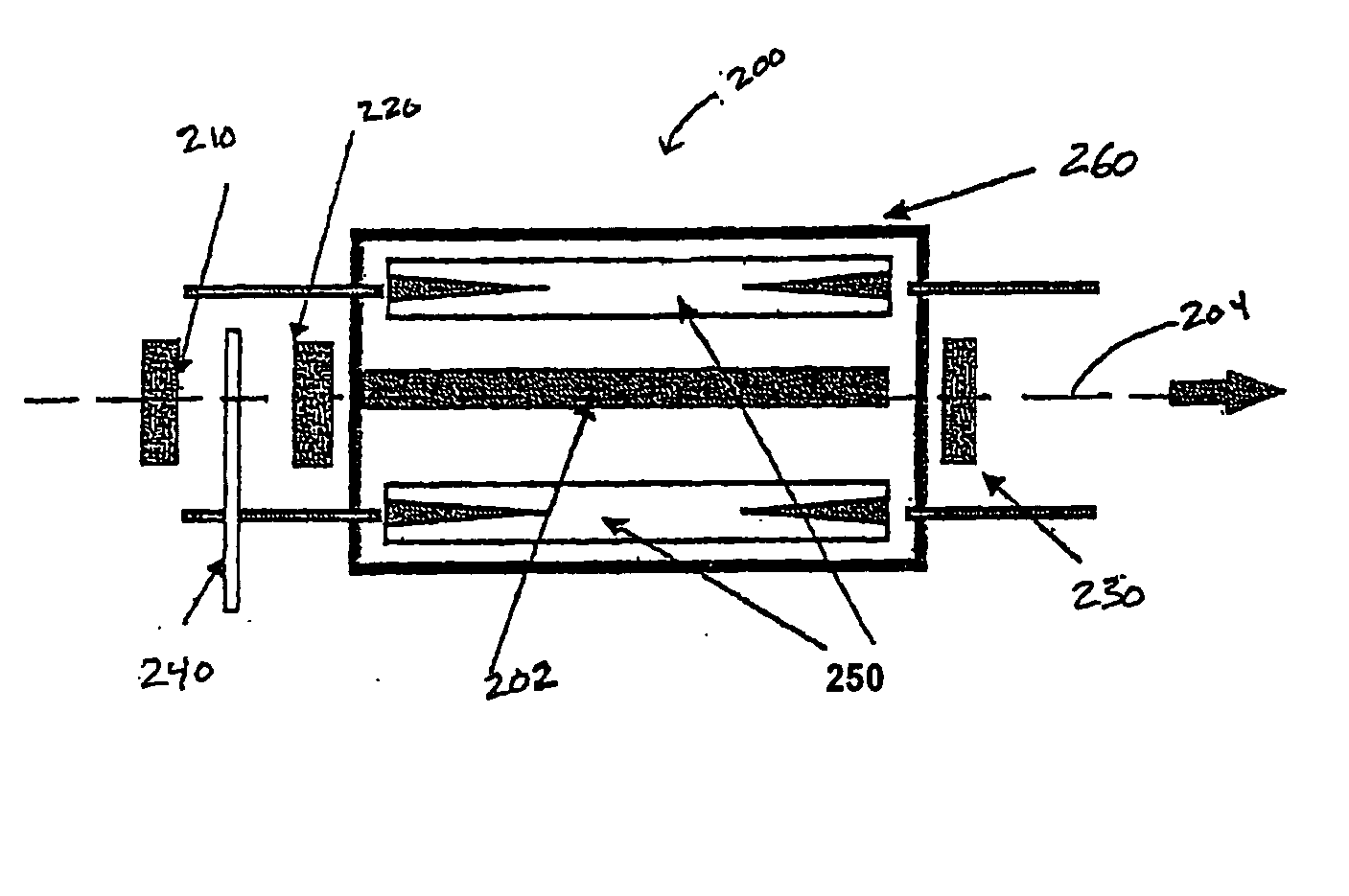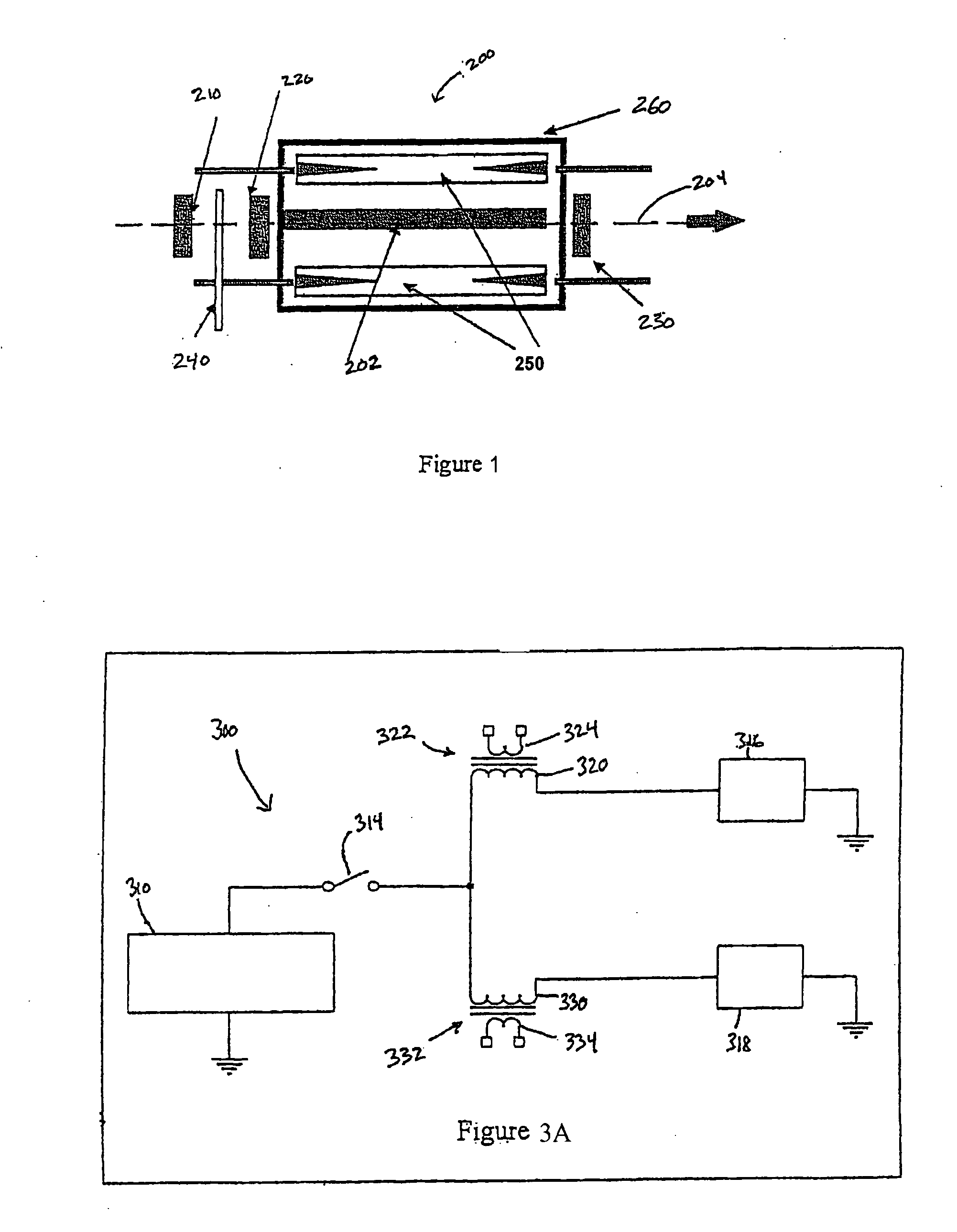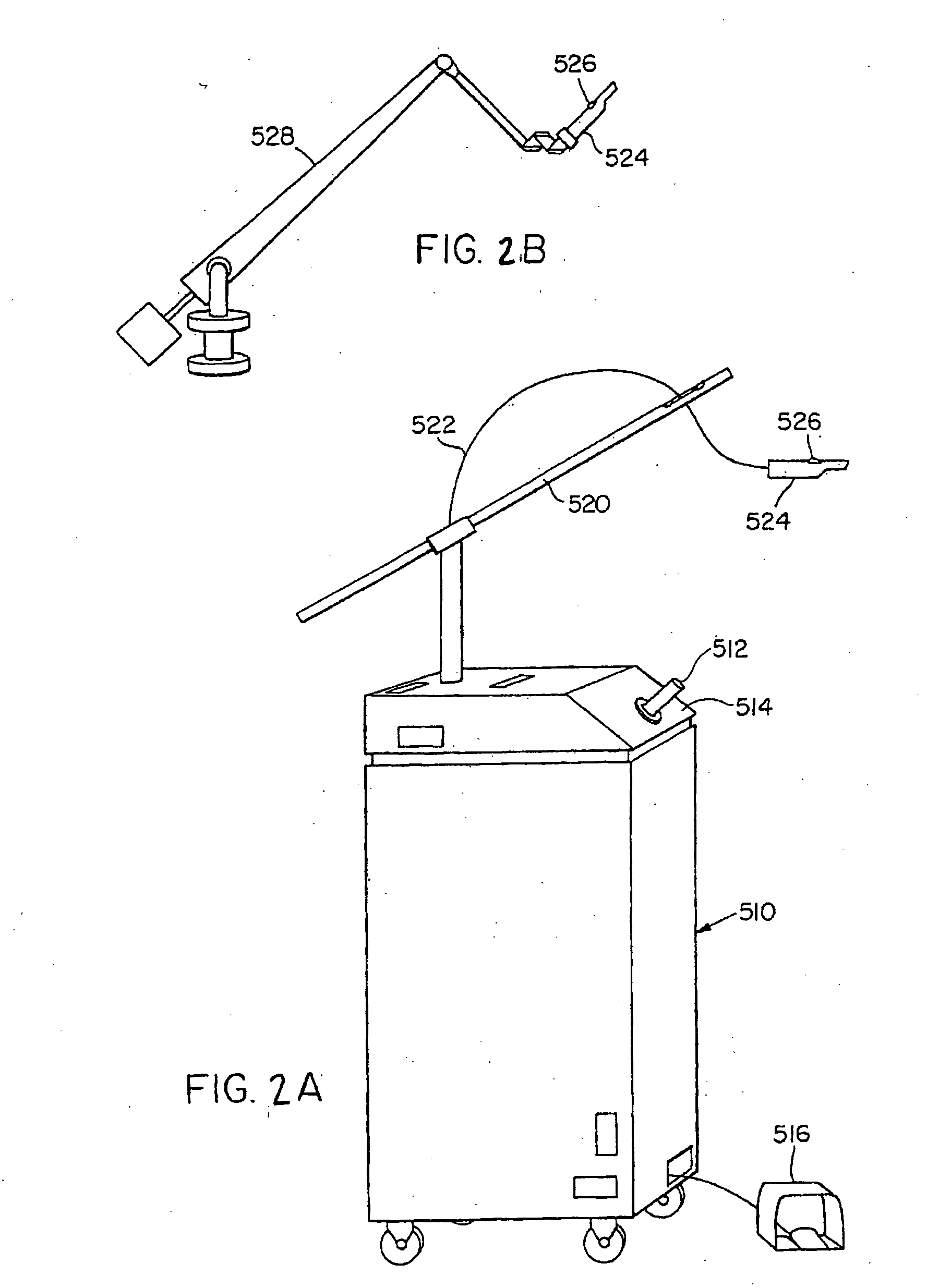Multiple wavelength laser workstation
a multi-wavelength laser and workstation technology, applied in the field of lasers, can solve the problems of difficult to control the timing between laser pulses, inability to achieve an acceptable effect on pigmentation, and often only subtle results, so as to achieve improved results, improve the effect of absorption coefficient, and control the duration of tim
- Summary
- Abstract
- Description
- Claims
- Application Information
AI Technical Summary
Benefits of technology
Problems solved by technology
Method used
Image
Examples
Embodiment Construction
[0031] Lasers and laser workstations in accordance with the current invention may be embodied in various forms. Certain embodiments are described in further detail below.
[0032]FIG. 1 shows an embodiment of a laser, here an Nd:YAG laser. The emittance at two wavelengths of the Nd:YAG laser is illustrated in the energy level diagram of FIG. 4A.
[0033] Other suitable lasers include any laser capable of emitting at at least two wavelengths and include, for example, crystal lasing mediums, gas lasing mediums, dye lasing mediums or other types of lasing media. For example, a YAP:Nd lasing medium is capable of lasing at 1079 nm and / or at 1341 nm, as illustrated in the energy level diagram of FIG. 4B. Such a medium is described in U.S. Pat. No. 6,613,040, which is hereby incorporated herein in its entirety for all purposes. Other suitable lasing media include but are not limited to other rare earth and transition ion dopants as well as other crystal and glass hosts of these dopants. Exampl...
PUM
 Login to View More
Login to View More Abstract
Description
Claims
Application Information
 Login to View More
Login to View More - R&D
- Intellectual Property
- Life Sciences
- Materials
- Tech Scout
- Unparalleled Data Quality
- Higher Quality Content
- 60% Fewer Hallucinations
Browse by: Latest US Patents, China's latest patents, Technical Efficacy Thesaurus, Application Domain, Technology Topic, Popular Technical Reports.
© 2025 PatSnap. All rights reserved.Legal|Privacy policy|Modern Slavery Act Transparency Statement|Sitemap|About US| Contact US: help@patsnap.com



